

Compost R Us
Let’s consider a compost pile like your average small-business that you, as the new CEO, are taking over for the first time.
If you’re going to run a business, you have to meet the people who work for you.
The same thing goes for compost. There are a few big players in compost piles, which are responsible for the breakdown process. To understand the science of decomposition, you should first understand just how the decomposers in the equation operate.
The departments:
Microorganisms (need a microscope to see them)
Macroorganisms (visible to the naked eye)
Let’s meet the team!
Microorganisms (Bacteria)
Aerobic bacteria are the teeny-tiny workhorses of the compost pile. 25 000 of them, end-to-end, would barely cover an inch! Despite their tiny size, they do most of the work.
Much like us humans, aerobic bacteria require food, air and water to survive.
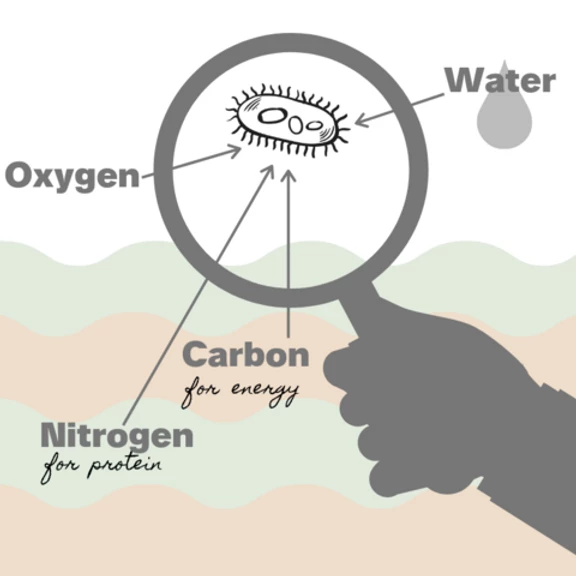
Aerobic bacteria consume carbon and nitrogen as a food source. They are called “chemical decomposers” because the way they break down your food waste actually changes the chemical composition of that waste.
The ideal ratio for carbon materials to nitrogen materials is between 25 parts carbon to 1 part nitrogen. If there is too much nitrogen in the equation, the aerobic bacteria cannot process it. This will lead to a smelly excess of nitrogen which cannot be used by the bacteria, and will be wasted as an ammonia-like gas.
The carbon (browns) requirement gives them the energy to keep munching away on your food waste, while the nitrogen (greens) give them protein so that they can be fruitful and multiply.
The bacteria turn your greens and browns into energy by oxidizing (transforming into CO2) the compost materials (especially the carbon/brown components).
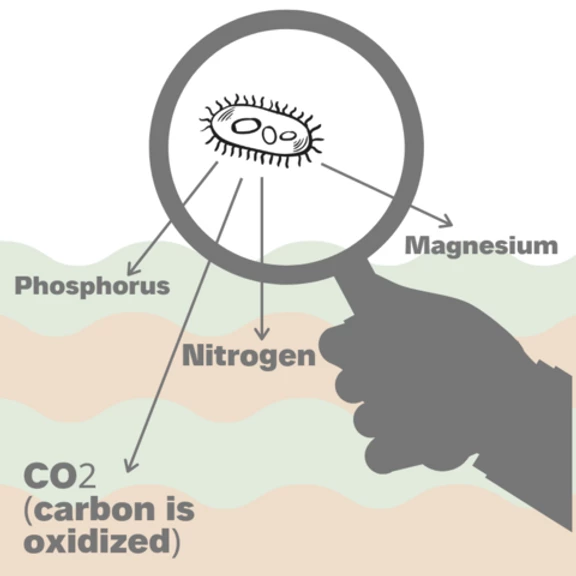
The oxidation increases the temperature in your compost pile, which is what people mean when they talk about “hot compost”.
This oxidation and increase of ambient air temperature is also responsible for the quick break-down of your food waste.
On top of breaking down your food waste quickly and efficiently, these little guys also excrete important nutrients, such as nitrogen, phosphorus and magnesium.
Despite their many advantages, these bacteria can be finicky when it comes to their working conditions. If your compost pile becomes too wet, too dry, too cold, too acidic, too high in nitrogen, or if it does not receive a minimum of 5% oxygen, these bacteria will pack up their desks and quit (lol, they’ll die).

When these miserable conditions are met, your compost pile is now ready to play host to:
Anaerobic bacteria, which are the lazier, smellier workers that nobody wants to hire for their compost pile, but which can sometimes crop up if aerobic bacteria are chased away due to a toxic work environment.
These bacteria thrive in cooler environments, unlike their aerobic cousins. Whenever you hear someone referring to “cold compost”, they’re essentially saying that they drop a bunch of food waste in a pile and wait for it to eventually break down over a long period of time - this invites anaerobic bacteria.
Anaerobic bacteria generate a lot of useless acids and substances that cause strong odors. These include: hydrogen sulfide (that rotten-egg smell), cadaverine (eau-de-cadaver, anyone?) and putrescine (shared root word: putrescence).
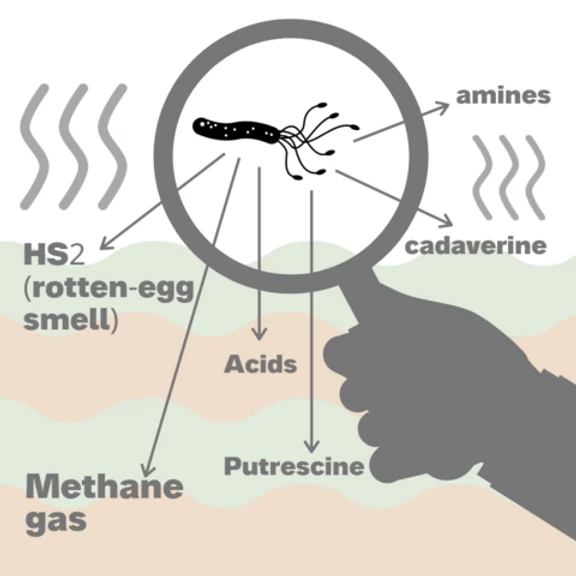
Not only do anaerobes stink, they might also damage your garden: amines (ammonia-like substances) stink, yes, but they also generate unavailable nitrogen which will not be absorbed by your soil, and can even burn your plants!
Further, because these bacteria do not oxidize carbon and nitrogen materials, a “cold compost” system does not reach a high enough temperature to kill weed seeds and pathogens. That pile of waste will be sitting out in your yard for months, if not years, to come.
Macroorganisms
Insects
There are many different creepy-crawlies that contribute to the breakdown of organic waste.
Insects are considered physical decomposers, because they break down waste by physically chewing, grinding and tearing the materials into smaller pieces.
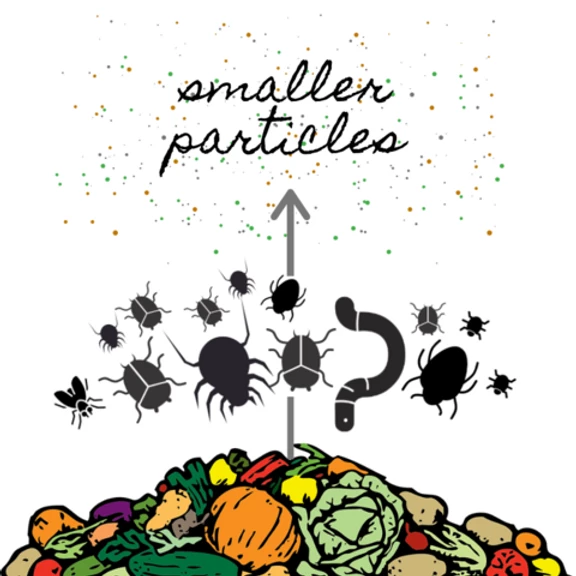
As much as you may not like the thought of millipedes, centipedes, ants and other tiny critters swarming around your yard, they’re actually doing a lot of good to speed up the decomposition process.
Plus, their poop is full of nutrients, and gives your aerobic bacteria more stuff to digest!
You! (The Gardener)
Now, hopefully you haven’t been led to believe that these little bacteria-and-bug-buds will do all the work for you. They won’t.
Like any good CEO, your workers’ best efforts need to be met by no small amount of yard work (if not hard work) on your part.
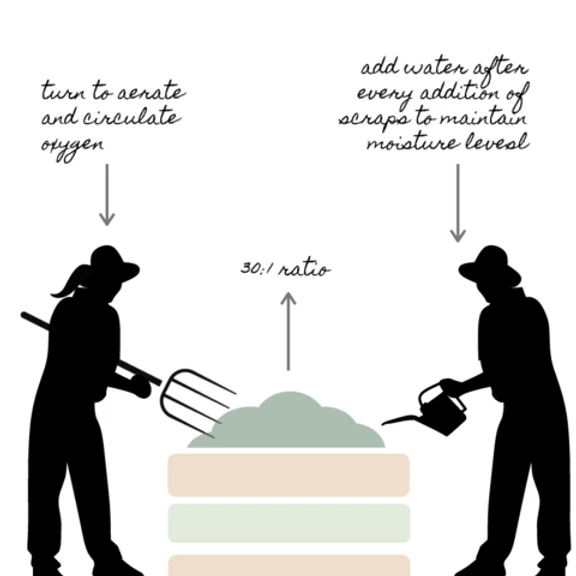
In order to create a pleasant, oxygenated work environment for your aerobic employees, and to avoid being forced to take on anaerobic layabouts, you’ll need to make sure that your compost pile is moist (but not too moist), oxygenated (but not too oxygenated) and free of any overly-acidic materials.
The Workspace
Any good office space will have climate control and a maintenance crew.
The same goes for your compost pile.
Getting Hot In Here
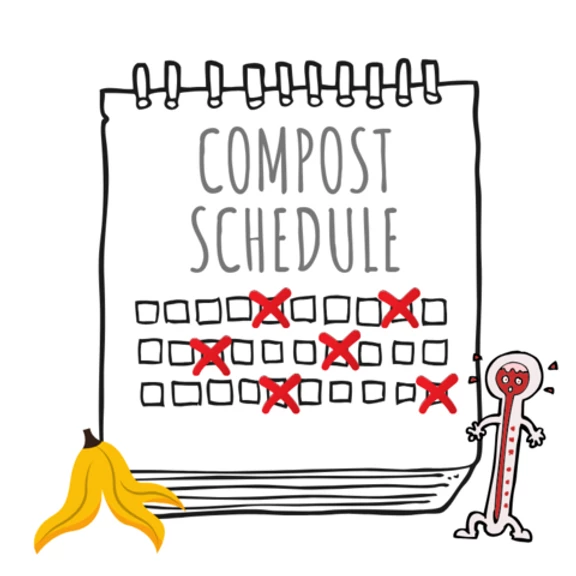
Aerobic compost piles - or “hot” compost - will reach temperatures of up to 49-77 ℃ (or 120 - 170 ℉) within a few days. Once these temperatures are reached, be sure to turn the pile to continue aerating. If you don’t, then the bacteria inside the pile will run out of both oxygen and fresh material to munch on.
With regular turning, every 3-7 days, your compost pile or bin can break scraps down within 4-6 weeks.
Moisture
Your compost pile needs moisture to feed those aerobic bacteria. The ideal texture is that of a damp sponge. If you are able to squeeze a handful of compost, and wring out liquid, then it is too wet.
A good rule of thumb: for every new addition of scraps, hose the pile down for a few seconds to give it the required moisture.
By now, you should have a reasonable understanding of the science of compost. Of course, because it’s a biological process, it is not an exact science. Sometimes unforeseen circumstances can arise which might mean you don’t have the time to see to your compost, or things just go wrong.
Looking to troubleshoot? Curious about what to do when things go wrong with your compost? No worries! Stay tuned for our blog post on 7 Common Compost Problems and how to fix them.
Source: https://www.foodcycler.com/post/how-compost-works-get-the-dirt-on-dirt




